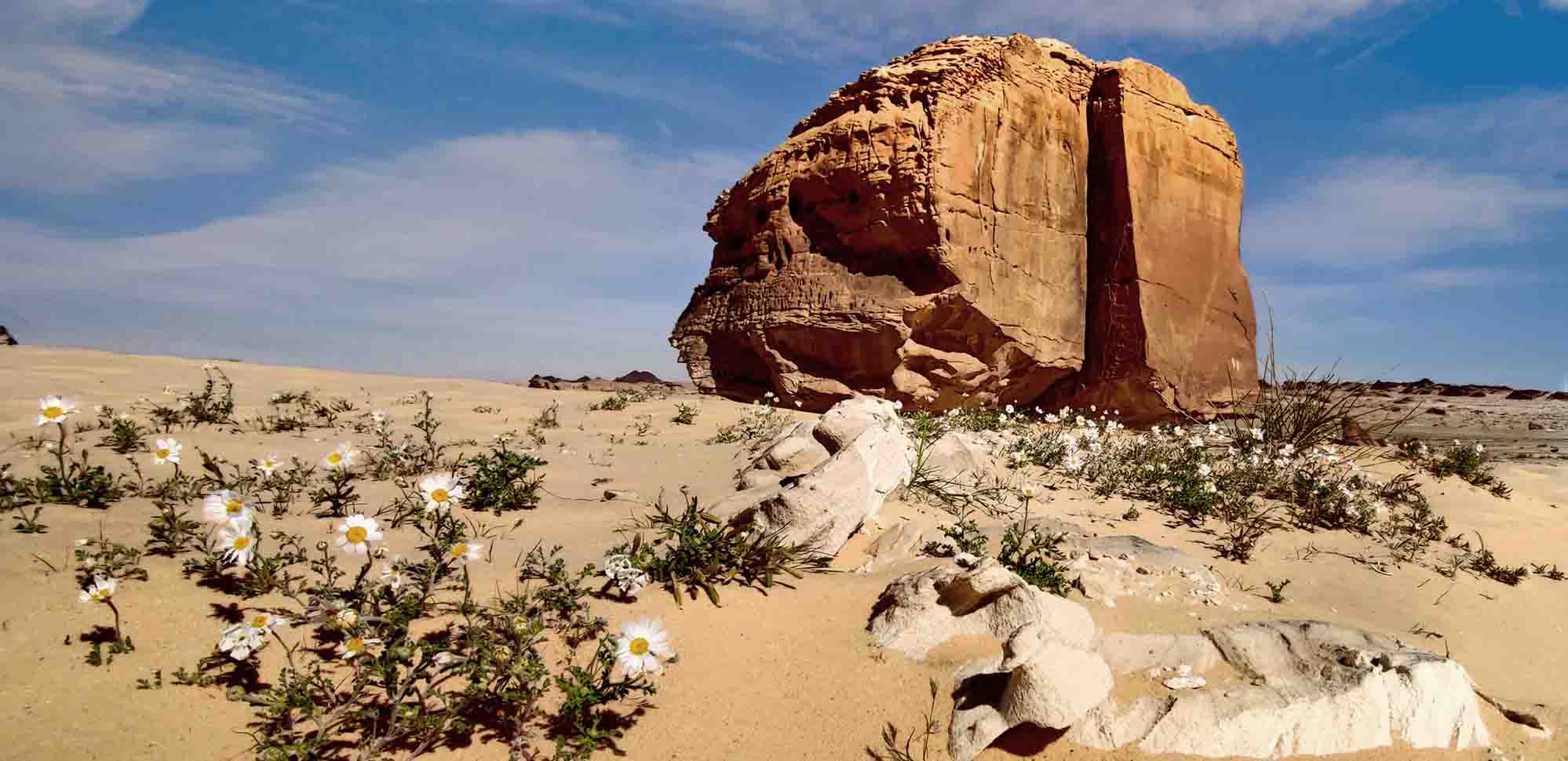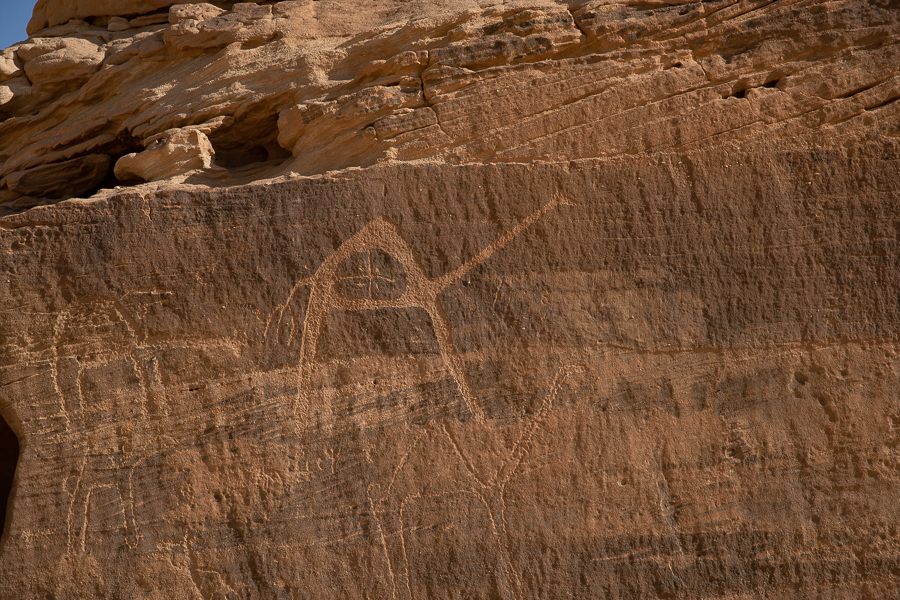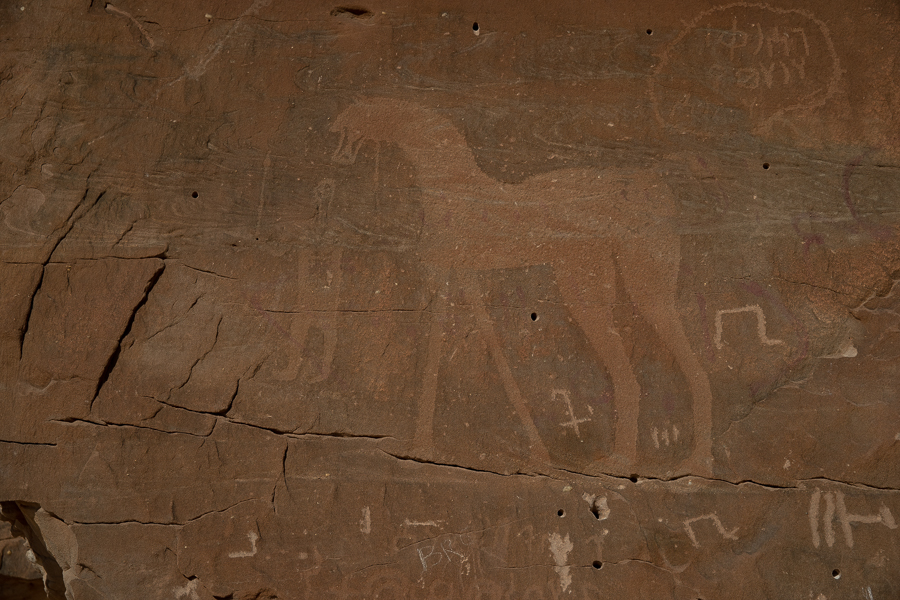Al Naslaa: An Extraordinary Rock Formation
Near the ancient oasis of Tayma in Saudi Arabia lies a hidden gem—a fascinating rock formation known as Al Naslaa. This natural wonder is characterized by a perfect slit between two imposing sandstone blocks, captivating researchers and travelers alike. Beyond its striking appearance, Al Naslaa offers a rich tapestry of petroglyphs, providing valuable insights into early Arabian culture and the remarkable bond between humans and horses.

Exploring the Enigma of Al Naslaa Rock
The Al Naslaa rock formation, situated close to Tayma, showcases the incredible power of nature’s sculpting hand. The two sandstone blocks, supported by a naturally-formed pedestal, are separated by a flawless vertical slit. The exact cause of this split remains a mystery, but experts suggest a combination of windblown sand, periodic rainfall, and underlying rock movements may have contributed to this unique spectacle.

Reaching Al Naslaa involves an adventurous off-road journey through sandy terrain, with four-wheel drive vehicles recommended for navigating the rugged path. The effort is well worth it, as visitors are greeted by a mesmerizing rock structure adorned with remarkable petroglyphs.

A Window into Ancient Arabia
Upon closer inspection of Al Naslaa’s smooth surfaces, an array of intricate petroglyphs is revealed. Among these is a captivating scene depicting a man leading his horse, surrounded by depictions of camels and tribal symbols known as Wasums. These ancient carvings provide a fascinating glimpse into the grooming, training, and handling of early Arabian horses.

The Intricate Petroglyphs of Al Naslaa
The panel on the right boulder showcases a central figure—a magnificent Arabian horse portrayed in the traditional North Arabian style. The artwork reveals intricate details, including a man holding the horse’s lead with one hand and an arrow in the other. The horse exhibits features such as a halter, a prominent forelock, and a full tail. The shading on the horse’s body suggests a solid natural coloration. The man depicted in the scene wears a futah—a cloth wrap covering the lower part of his body. This portrayal provides valuable insight into the practices and techniques employed in the training and control of Arabian horses during ancient times. The man’s firm grip on the lead, keeping the horse’s head in the correct position, demonstrates the artistry and skill required in horse handling. The raised arrow, positioned in front of the horse, may have served as a training tool, capturing the horse’s attention and focus during their interactions.

Al Naslaa Rock, nestled near Tayma, Saudi Arabia, stands as a testament to the astonishing forces of nature and the ancient cultural heritage of the Arabian Peninsula. Its remarkable slit, sculpted by wind and rain over millennia, invites us to marvel at the mysteries of the natural world. The intricate petroglyphs etched on its surface serve as windows into the past, shedding light on the extraordinary relationship between humans and horses in early Arabian civilization. A visit to Al Naslaa is not only an adventure through rugged landscapes but also a journey through time, where ancient artistry and geological wonders converge in harmony.



